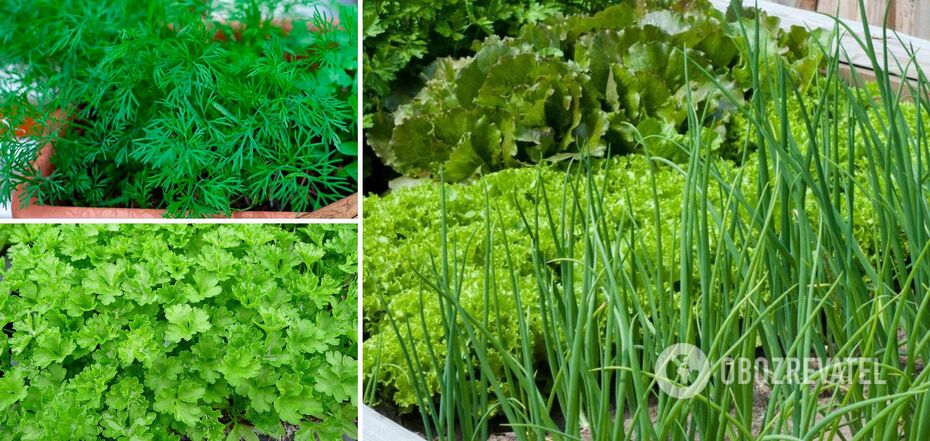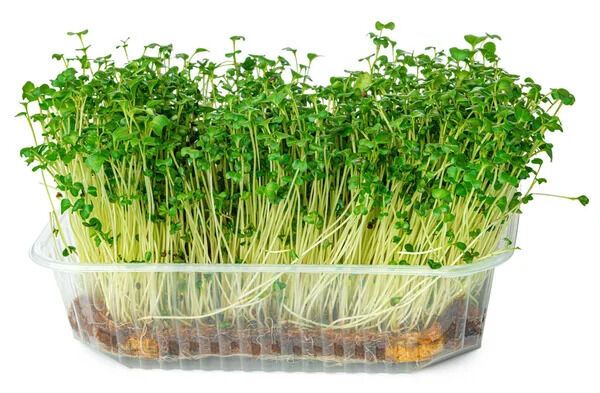Lifestyle
Better than store-bought and always at hand: how to grow herbs on the balcony
You can either buy fresh herbs in a store or grow them yourself. But herbs grown at home will not only be fresher, but will always be at hand.
You can grow parsley, dill, green onions, arugula, and watercress at home if you know the basic rules. OBOZREVATEL explains how to grow herbs on the balcony.
Onions
The first thing that can be planted on the balcony is onions. Onions can be grown both in water and in soil.
In the first case, the bulbs are placed in small containers so that their "tails" lightly touch the water. In this case, do not completely place the bulbs in water. Otherwise, they will simply disappear without taking root.
It is better to plant those bulbs that have already taken root in the soil (to do this, you need to keep them in water before planting, according to the first method). The soil with the planted bulbs should be constantly moistened, as onions do not like moisture deficit.
The procedure for planting onions is very simple. Expanded clay or other drainage material is laid out on the bottom of boxes or pots, then the soil is laid out and the bulbs are planted close to each other (they do not need to be deeply buried). The planted bulbs are watered abundantly.
Parsley
Parsley can be grown in two ways: from seeds and root crops.
In the first case, to get a quicker harvest, it is recommended that you first soak the seeds in a cheesecloth bag under running water for 20-30 minutes, and then soak them in the same cheesecloth for another day. Next, the seeds are planted in the soil to a depth of half a centimeter, and about a centimeter of soil is added on top. When the sprouts appear, they need to be thinned out and the container with the plants transferred to a well-lit windowsill.
For planting root crops, it is better to choose short but wide in diameter (at least 2 cm) root crops. Root crops are planted in well-moistened soil at a distance of 2-3 cm from each other and 4-5 cm between rows. Until the cuttings begin to grow, the box should be kept in a cool place, and only after the shoots begin to grow should it be moved to the windowsill.
Dill
To grow dill at home, it is better to buy light and humus-rich soil. Sowing should be done monthly, so that when you harvest the next crop, you won't have to wait long for it.
At least 3 g of seeds are planted in a small rectangular container, and only after the first sprouts appear, thin out so that there are 2-3 centimeters between the plants.
Dill should be watered abundantly. It is also worth picking up liquid fertilizers for better growth.
Arugula
It is better to buy soil for arugula in a special store - the finished mixture should be slightly acidic. The plant is undemanding to light conditions, so it can grow both on a balcony or windowsill on the south side and on the north side. The optimal temperature for growing is +15-18 degrees Celsius.
Arugula can be sown in cups to a depth of 1-1.5 cm, and when the shoots sprout, they will need to be dived into pallets or large pots. Arugula needs to be watered regularly. If this is not done, the leaves will become bitter and coarse.
When transplanting arugula bushes into a box, the distance between them should be about 20-40 centimeters, and between rows - 10-15 cm. A bush height of 10 cm is considered to be the term of "maturation" of arugula.
Watercress
It can be grown in plastic bottles or in pots. Both the windowsill in the apartment and the balcony are suitable. Watercress can be grown even in winter at a temperature of +15-17 degrees. It is unpretentious to light.
Seeds are sown to a depth of half a centimeter, the soil is not added on top. It is advisable to keep the boxes or pots in the shade until emergence, and when sprouts appear, it is better to put them in a lighted place.
Watercress is a very moisture-loving plant, so you need to moisten not only the soil, but also the air and the leaves themselves.
You can cut the leaves for salad in 2-3 weeks. After harvesting, it is advisable to fertilize the soil.





























